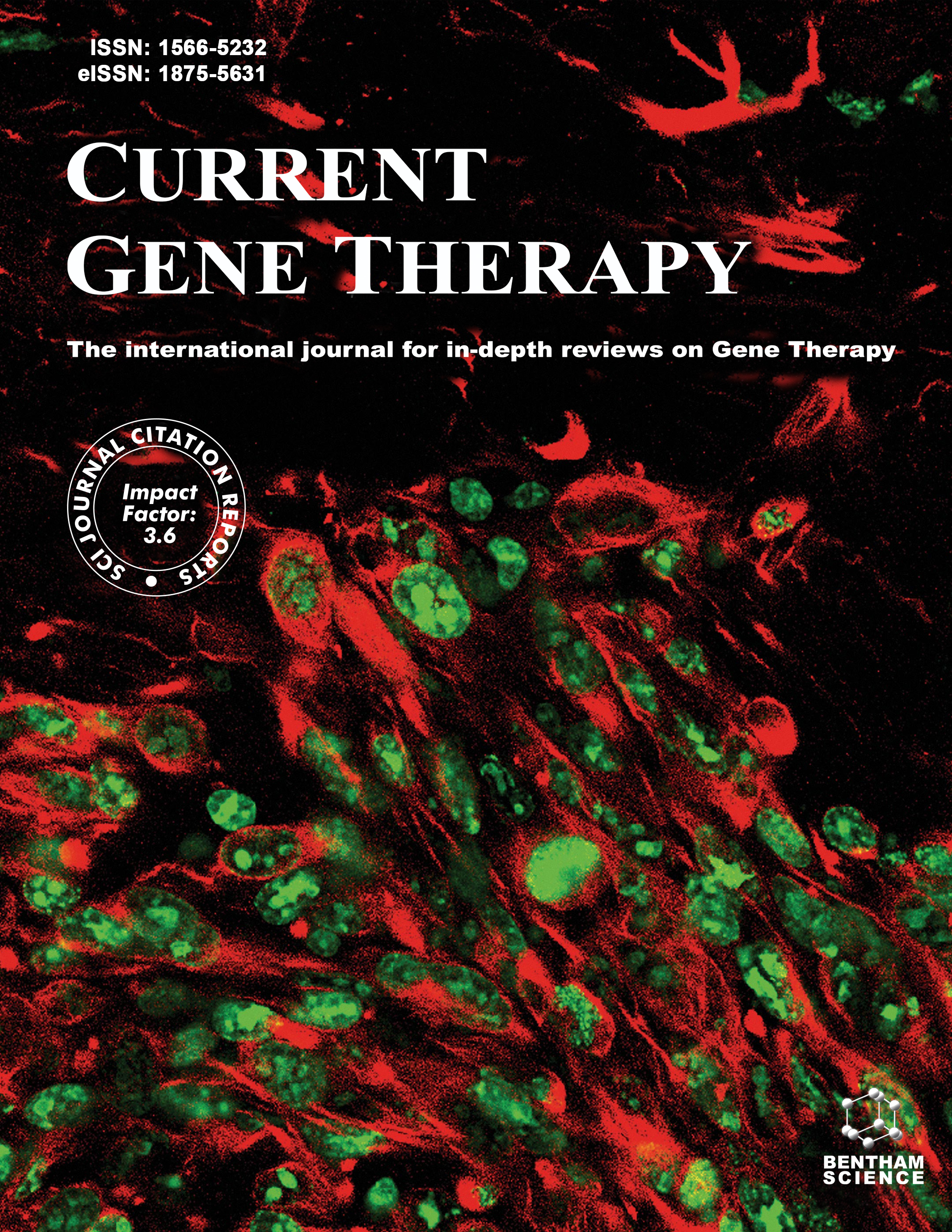- Home
- A-Z Publications
- Current Gene Therapy
- Previous Issues
- Volume 3, Issue 6, 2003
Current Gene Therapy - Volume 3, Issue 6, 2003
Volume 3, Issue 6, 2003
-
-
Preface [Hot Topic: Biosafety of Virus-Derived Vectors (Guest Editor: William Moens)]
More LessBiosafety of viral vectors was first conceived as a set of guidelines for the risk assessment and management of viral vectors under various research and development situations. People from academia or industrial area concerned with basic research, gene therapy and vaccine technologies, were demanding ways to improve their daily research practices or production activities, their in vivo experiments and their clinical trials with Read More
-
-
-
A Short Course on Virology / Vectorology / Gene Therapy
More LessFor people starting off in the field of gene therapy, the encountered terminology is often quite confusing. Moreover, the background on basic virology may be modest. The following introduction provides a head start to any novice willing to gain more in-depth knowledge on the subject. The development of gene therapy is also addressed from a historical perspective.
-
-
-
Biosafety of Onco-Retroviral Vectors
More LessAuthors: Thierry VandenDriessche, Desire Collen and Marinee K.L. ChuahExtensive gene therapy studies in preclinical models and in clinical trials underscore the relative safety of onco-retroviral vectors. Up until recently, no adverse effects have been reported in nearly 2000 patients that were enrolled in gene therapy clinical trials involving oncoretroviral vectors. However, the main safety concern of using onco-retroviral vectors is related to the risk of malignant transformation following oncogene Read More
-
-
-
Biosafety of Lentiviral Vectors
More LessThe characteristics of lentiviral vectors (stable integration in non-dividing and dividing cells, long-term expression of the transgene, absence of immune response) make them ideal gene transfer vehicula for future gene therapy. However, the most potent lentiviral vectors are derived from highly pathogenic human viruses, such as HIV. We describe how the field has engineered lentivectors with increasing biosafety both for t Read More
-
-
-
Biosafety of Adenoviral Vectors
More LessAuthors: Marinee K.L. Chuah, Desire Collen and Thierry VandenDriesscheAdenoviral vectors can efficiently transduce a broad variety of different cell types and have been used extensively in preclinical and clinical studies. However, early generation of adenoviral vectors retained residual adenoviral genes that contribute to inflammatory immune responses and toxicity. In addition, these vectors often result in transient expression of the potentially therapeutic transgene. Some clinical trials based on early Read More
-
-
-
Evaluation of Risks Related to the Use of Adeno-Associated Virus-Based Vectors
More LessAuthors: L. Tenenbaum, E. Lehtonen and P. E. MonahanRecombinant AAV efficacy has been demonstrated in numerous gene therapy preclinical studies. As this vector is increasingly applied to human clinical trials, it is a priority to evaluate the risks of its use for workers involved in research and clinical trials as well as for the patients and their descendants. At high multiplicity of infection, wild-type AAV integrates into human chromosome 19 in ∼60% of latently infected cell lines Read More
-
-
-
Risk Assessment of the Use of Autonomous Parvovirus-Based Vectors
More LessAutonomous parvoviruses are small, non-enveloped, lytic DNA viruses replicating in the nucleus of actively dividing mammalian cells of appropriate species and tissue origins. In contrast to AAV, the other main subgroup of parvoviruses, autonomous parvoviruses do not require the assistance of an auxiliary virus for productive infection and do not stably integrate in the cellular DNA. Therefore, autonomous parvoviruses are suitab Read More
-
-
-
The Uses of Poxviruses as Vectors
More LessAuthors: A. Vanderplasschen and P.- P. PastoretPoxviruses have played an amazing role in the development of virology, immunology and vaccinology. In 1796, deliberate inoculation of cowpox virus to humans was proved by Dr. Edward Jenner to protect against the antigenically related smallpox virus (variola). This discovery founded the science of immunology and eventually led to smallpox eradication from the earth in 1980 after a world wide vaccination campaign with Read More
-
-
-
Biosafety of Herpesvirus Vectors
More LessAuthors: S Gogev, F. Schynts, F. Meurens, I. Bourgot and E. ThiryHerpesviruses are large DNA viruses, which possess a number of advantages as gene delivery vectors. These relate to an ability to package large DNA insertions and establish lifelong latent infections in which the viral genome exists as a stable episome in the nucleus. For gene therapy to become a potential future treatment option, biosafe therapeutically efficient gene transfer is a central, but more and more stringent req Read More
-
Volumes & issues
-
Volume 25 (2025)
-
Volume 24 (2024)
-
Volume 23 (2023)
-
Volume 22 (2022)
-
Volume 21 (2021)
-
Volume 20 (2020)
-
Volume 19 (2019)
-
Volume 18 (2018)
-
Volume 17 (2017)
-
Volume 16 (2016)
-
Volume 15 (2015)
-
Volume 14 (2014)
-
Volume 13 (2013)
-
Volume 12 (2012)
-
Volume 11 (2011)
-
Volume 10 (2010)
-
Volume 9 (2009)
-
Volume 8 (2008)
-
Volume 7 (2007)
-
Volume 6 (2006)
-
Volume 5 (2005)
-
Volume 4 (2004)
-
Volume 3 (2003)
-
Volume 2 (2002)
-
Volume 1 (2001)
Most Read This Month
Article
content/journals/cgt
Journal
10
5
false
en

Most Cited Most Cited RSS feed
-
-
New Hope for Intervertebral Disc Degeneration: Bone Marrow Mesenchymal Stem Cells and Exosomes Derived from Bone Marrow Mesenchymal Stem Cell Transplantation
Authors: Xiao-bo Zhang, Xiang-yi Chen, Jin Qi, Hai-yu Zhou, Xiao-bing Zhao, Yi-cun Hu, Rui-hao Zhang, De-chen Yu, Xi-dan Gao, Ke-ping Wang and Lin Ma
-
- More Less

